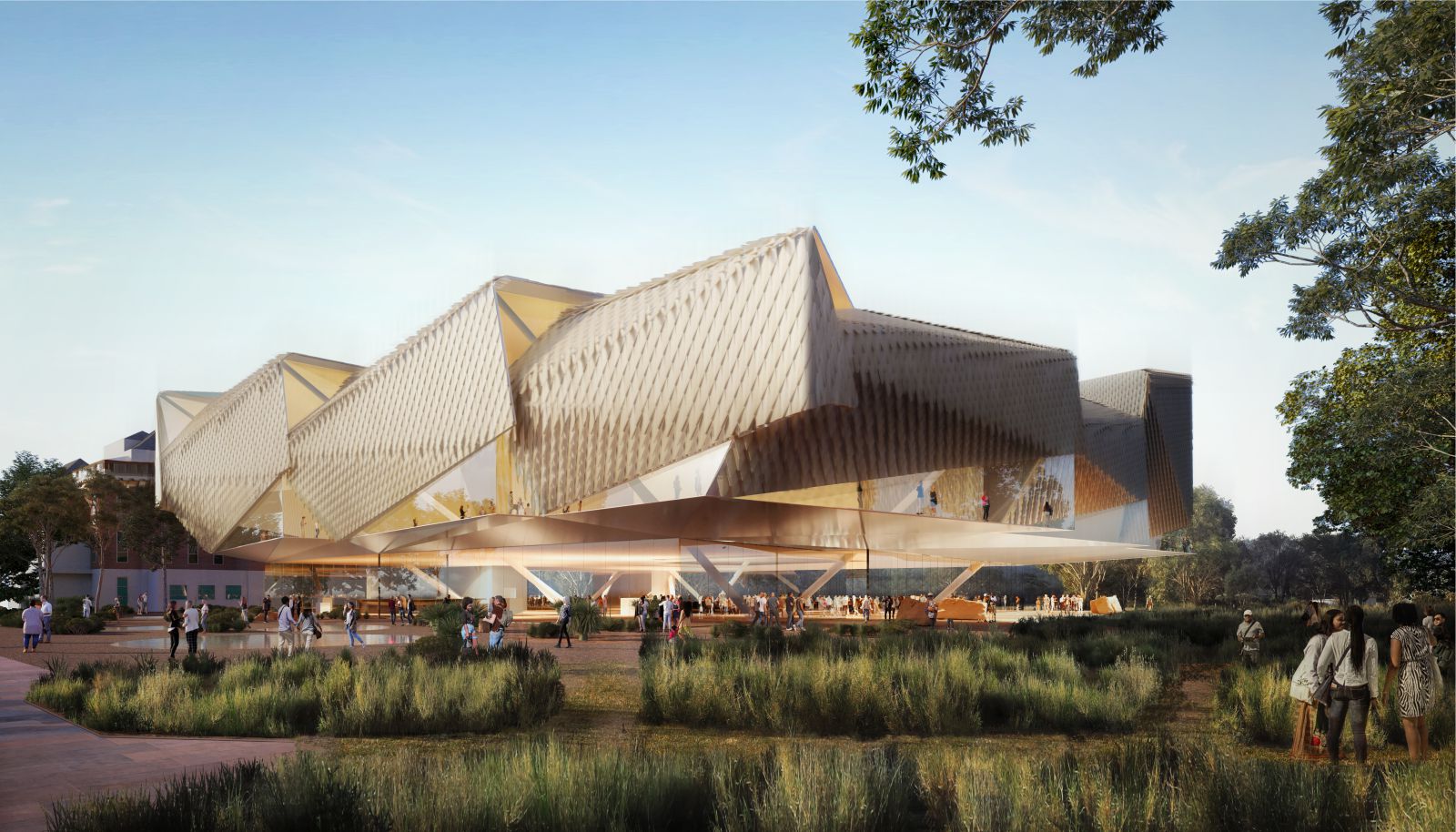Grounded on Kaurna land, the design of the 11,500 square metre building originates from the Aboriginal conception of the elements that link us to place: earth, land and sky. The design narrative for the building is based on the deep Aboriginal connection to country, place and kin, with connected layers being the foundation of the design. Lower level galleries and terraced landscapes are carved from the earth, providing indoor exhibition spaces, performance spaces and a gathering area for Welcome to Country ceremonies – within the outdoor amphitheatre.
Reveals in the upper galleries frame views oriented to the sky and natural surroundings, while also exposing the activity within – depicting truth-telling and transparency. The AACC offers 7,000 square metres of diverse exhibition spaces – ranging in size, height and light quality, each offering views of the natural surroundings – seamlessly blending inside with outside, natural with built. Between these exhibition levels is a radically welcoming arrival ground plane that extends to the land in all directions and reorients the building and its entry to Kaingka Wirra (Adelaide Botanic Garden).
An additional 8,100 square-metres of public realm welcomes visitors with a gentle slope of native landscape at North Terrace, providing seamless access. At the heart of the building is a flexible, three-story gathering and performance space that visitors spiral around as they make their way to different levels. For the structure and building skin (façade) the design team drew inspiration from the temporary shelter structures created by Aboriginal peoples across Australia, known by names such as “wurlie” and “humpy”.
A basket-like nest of columns shapes the central space and anchors the entire building, placing storytelling at the heart of the building. Draped onto this structure is a softly shimmering woven skin that tilts open to connect Aboriginal art and cultures back to the public and to Country. AACC will be a building of the 21st century, flexing to curation, use and time. Source by Diller Scofidio + Renfro and Woods Bagot and images Courtesy of Diller Scofidio + Renfro.



